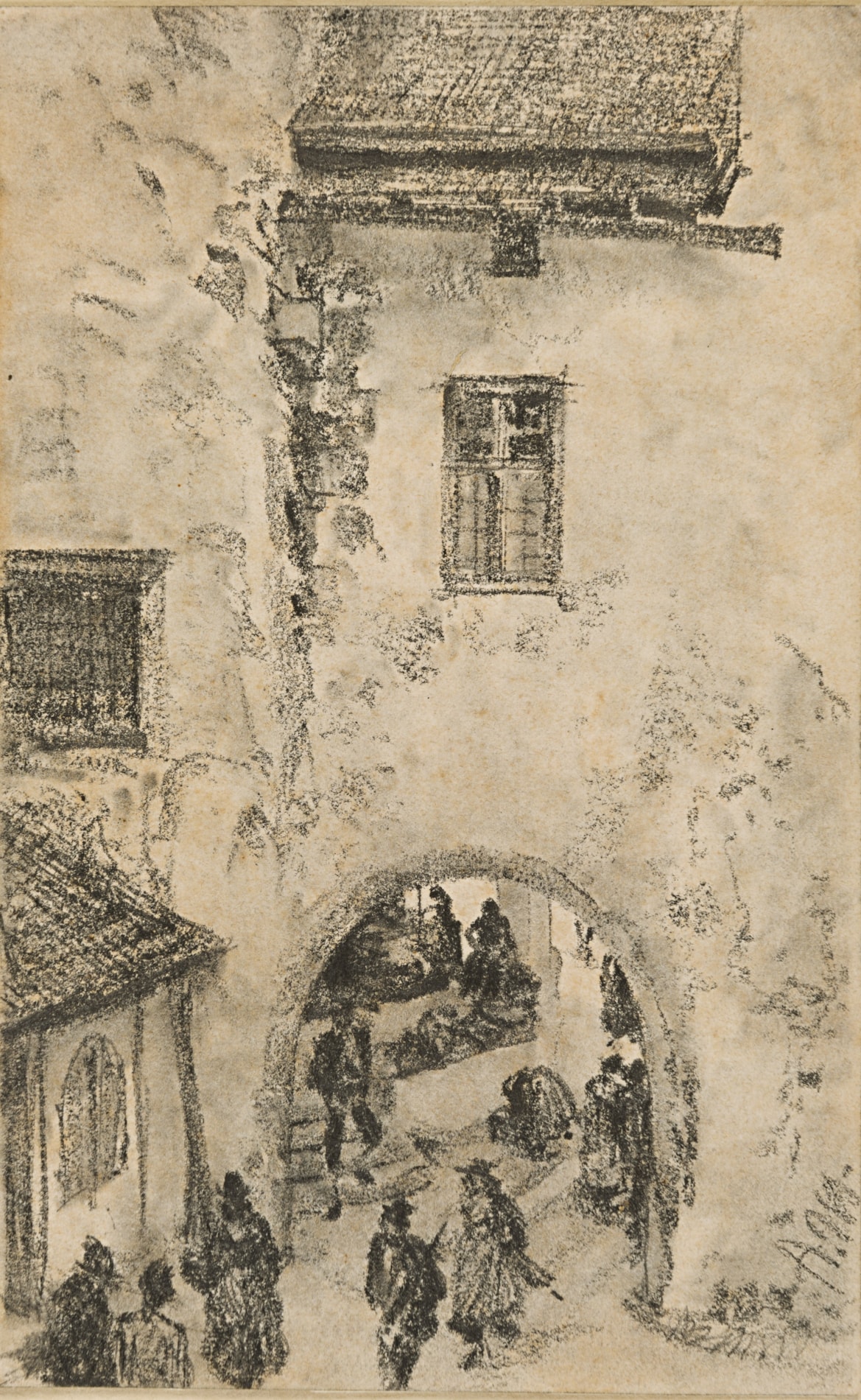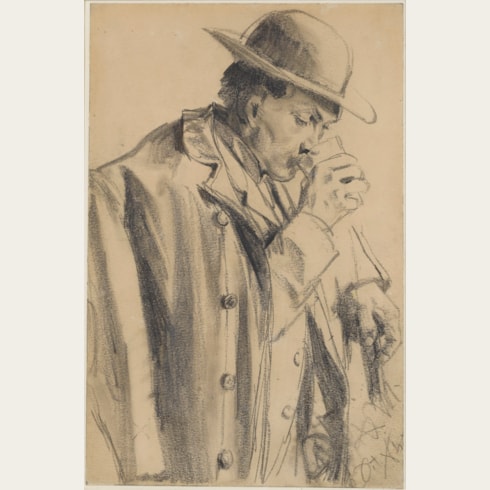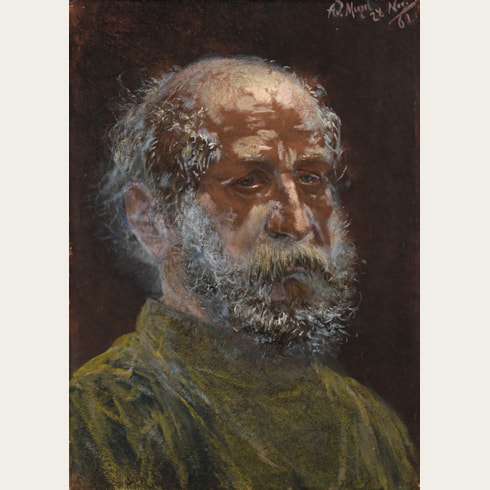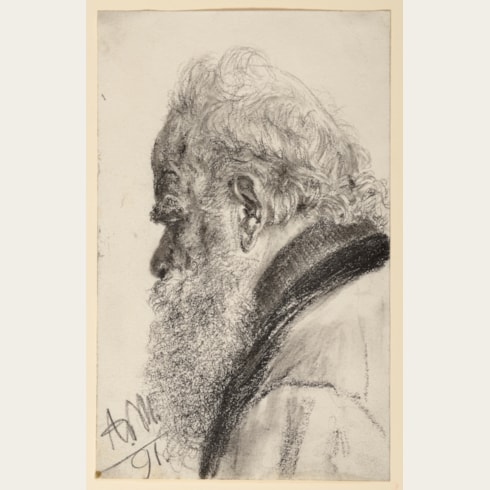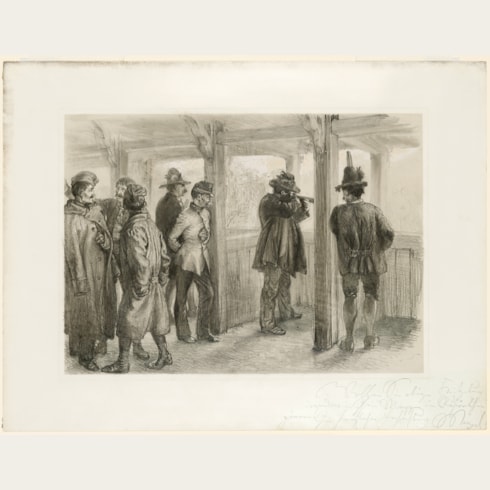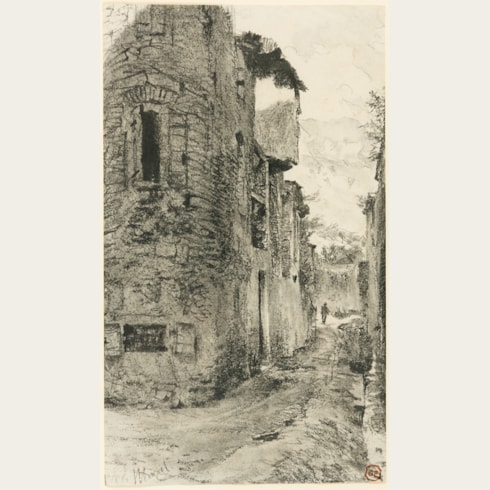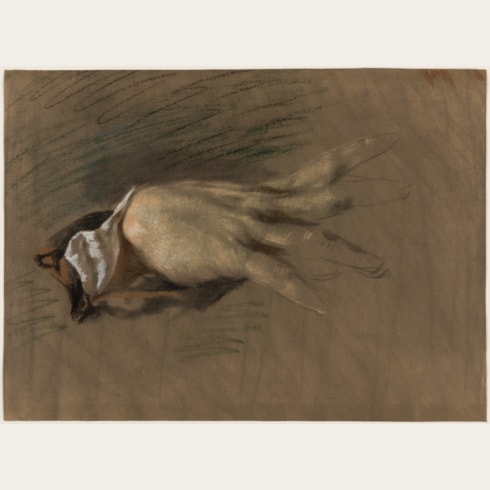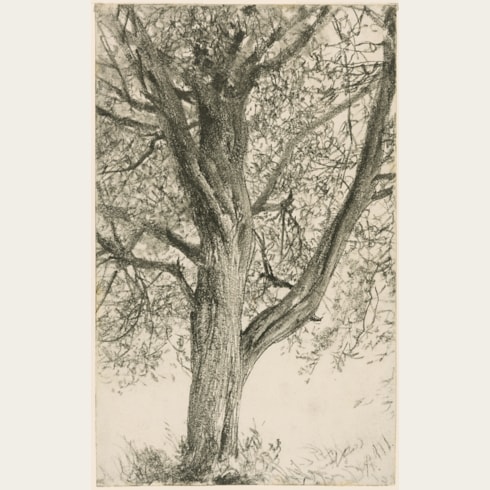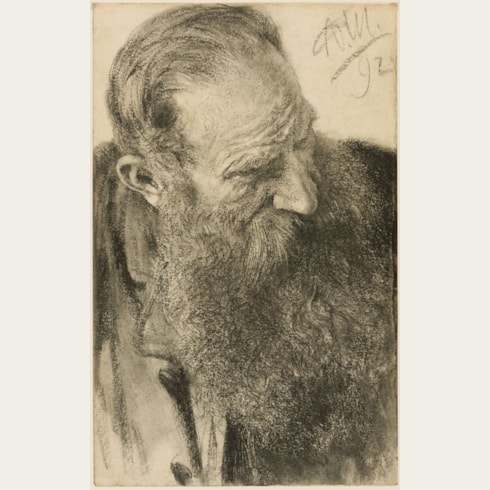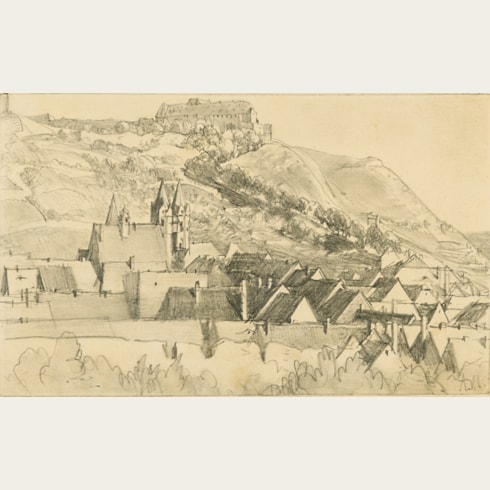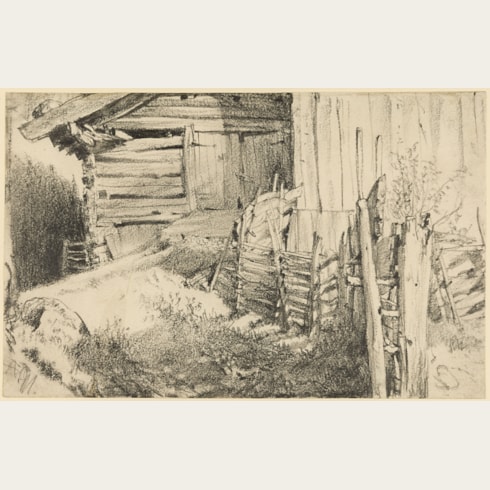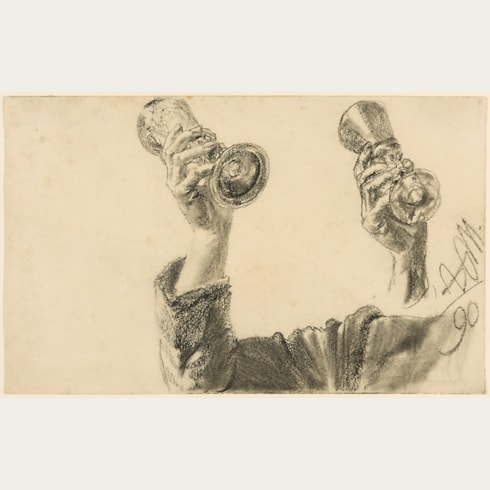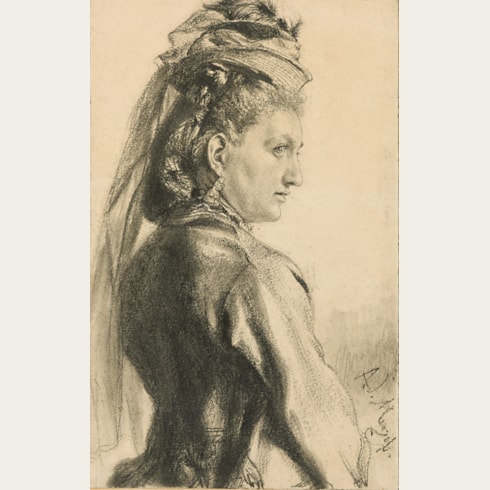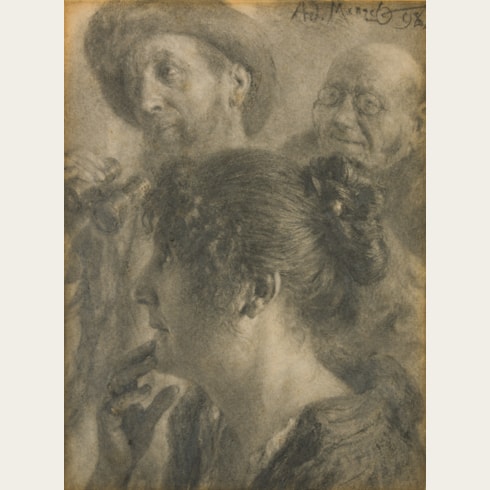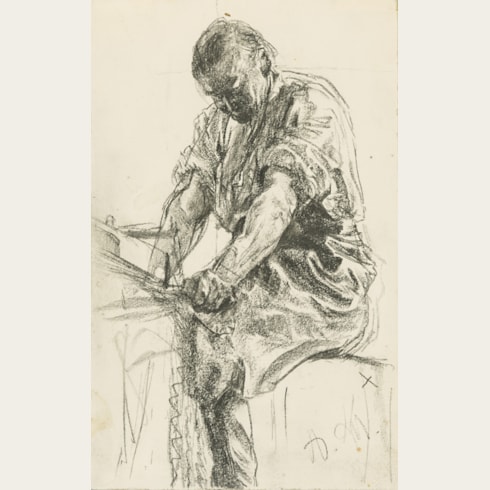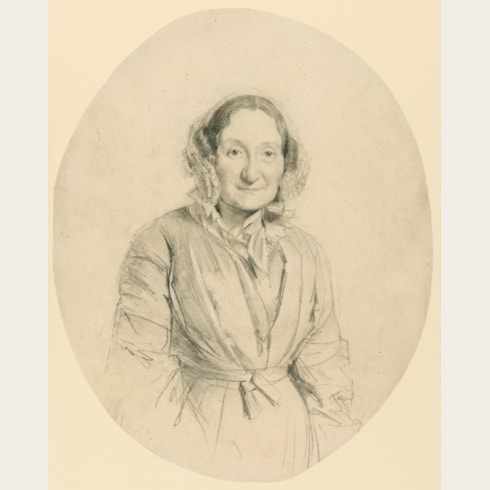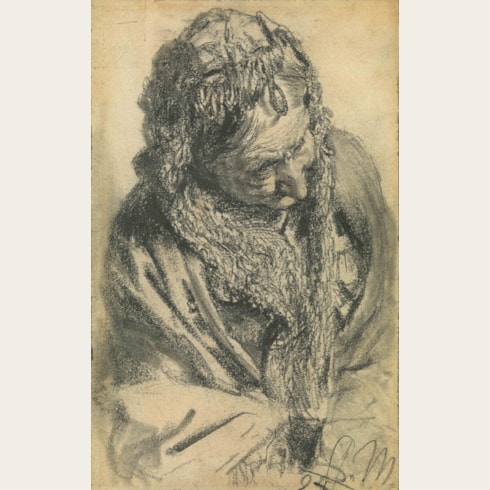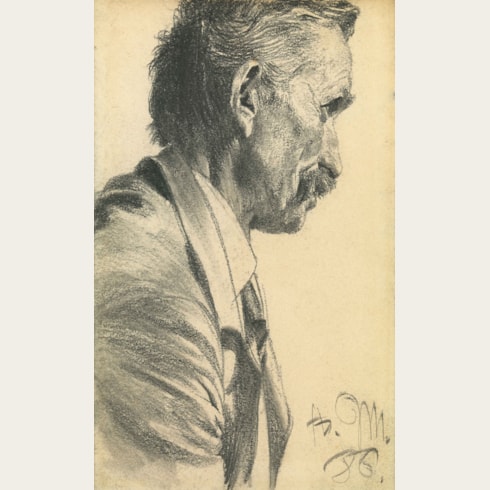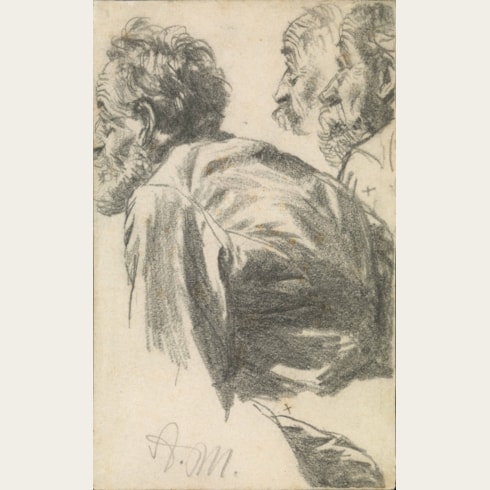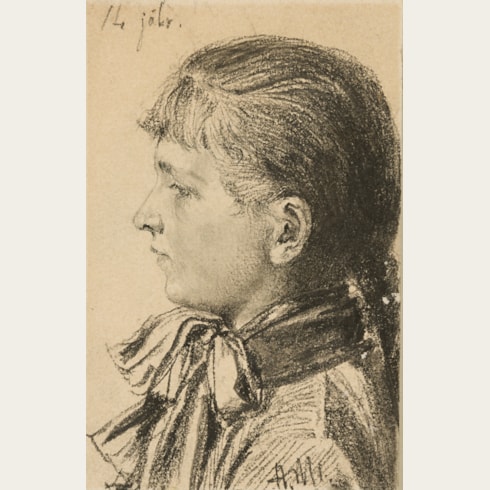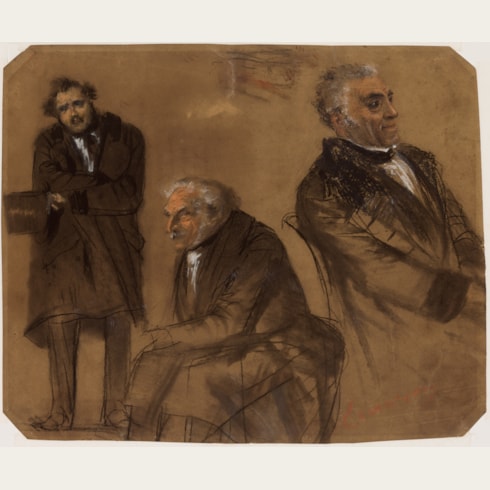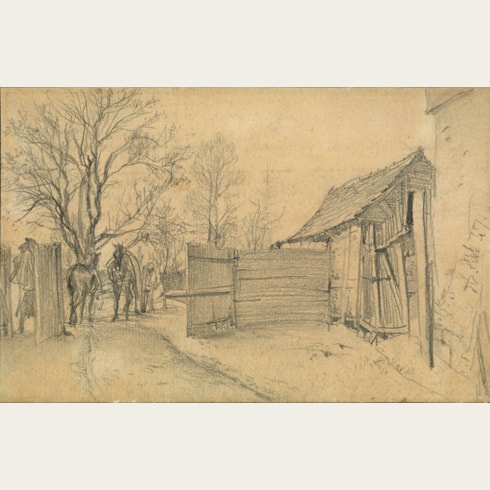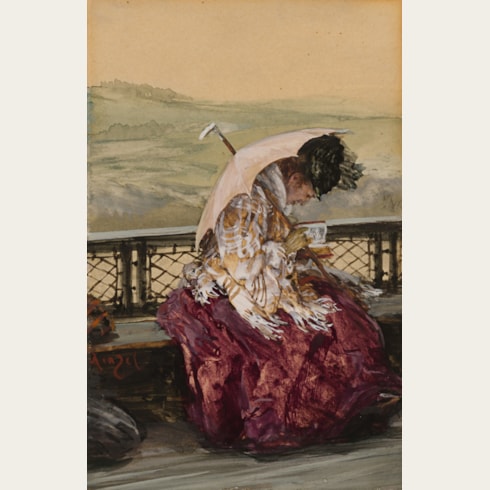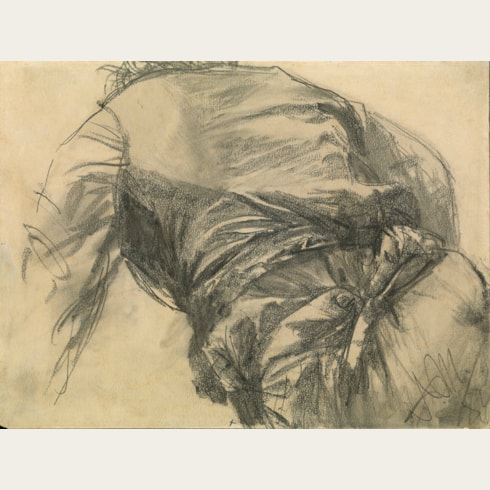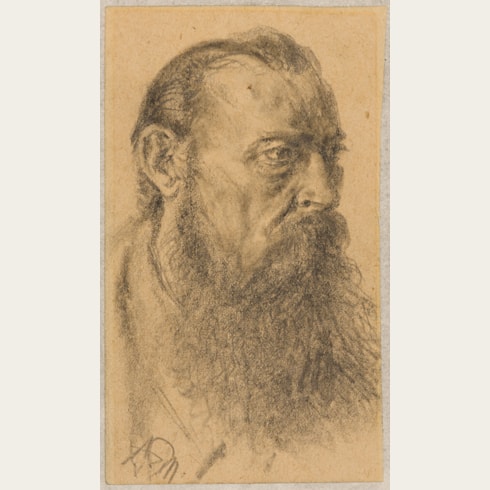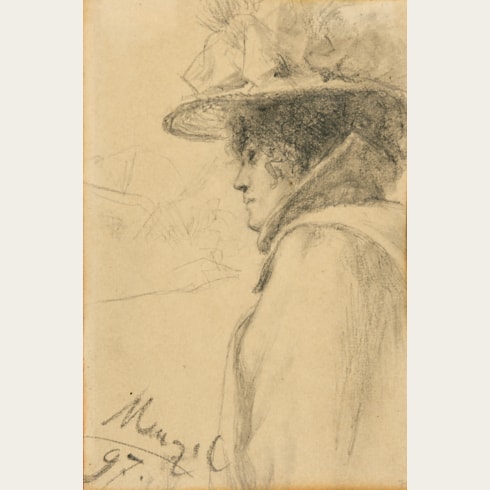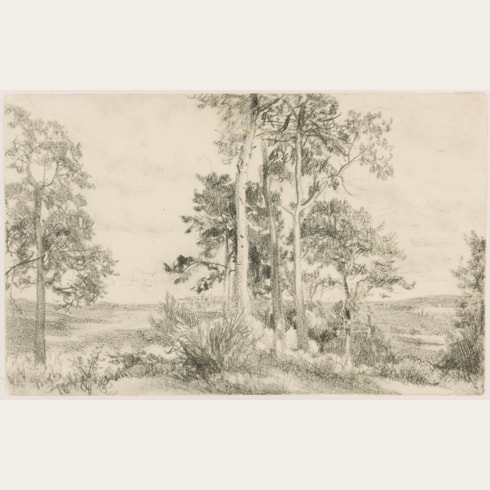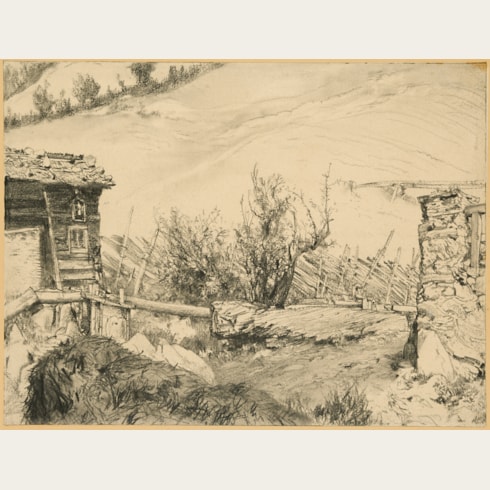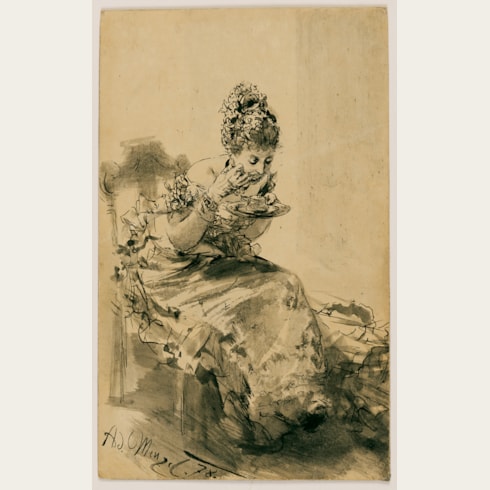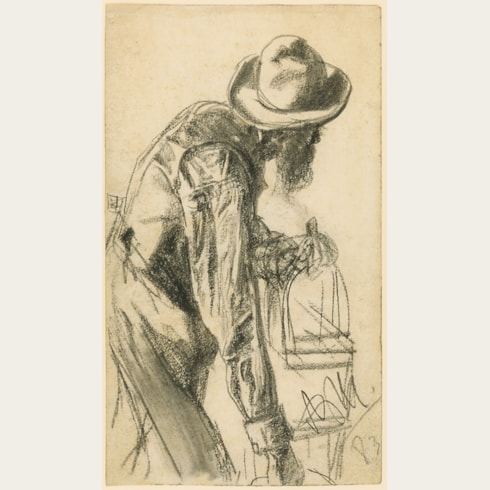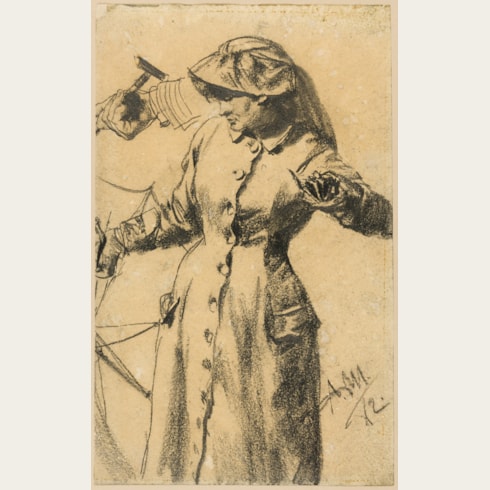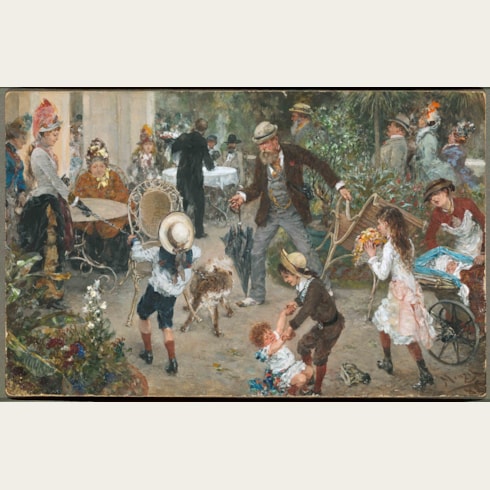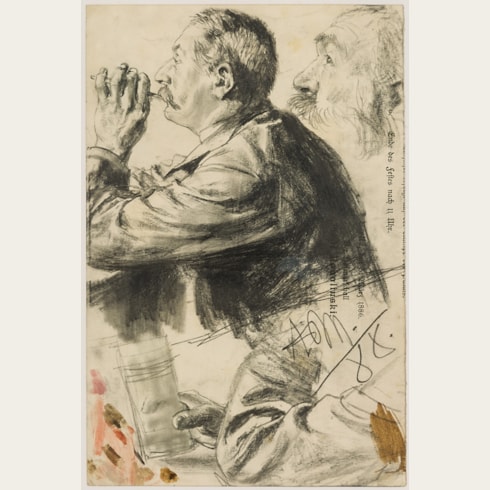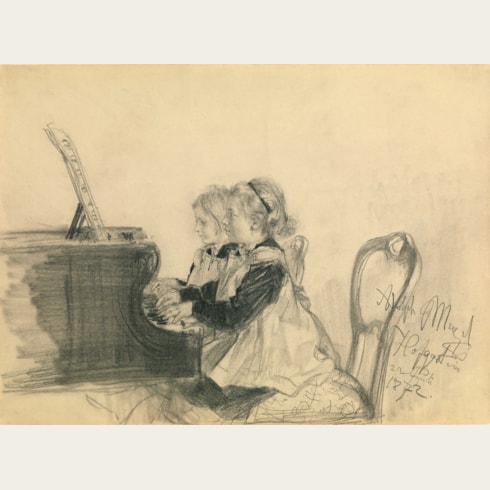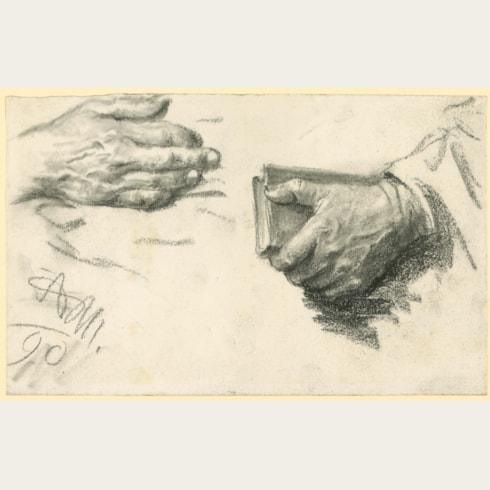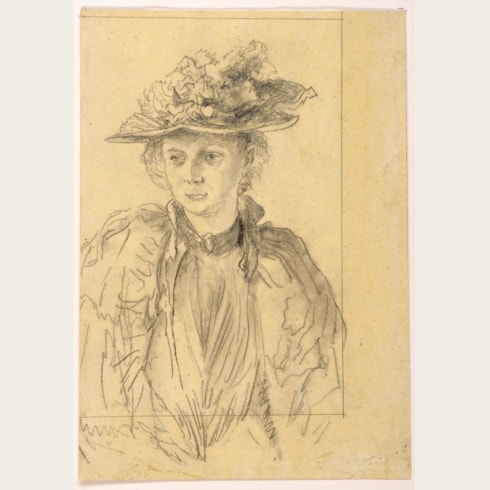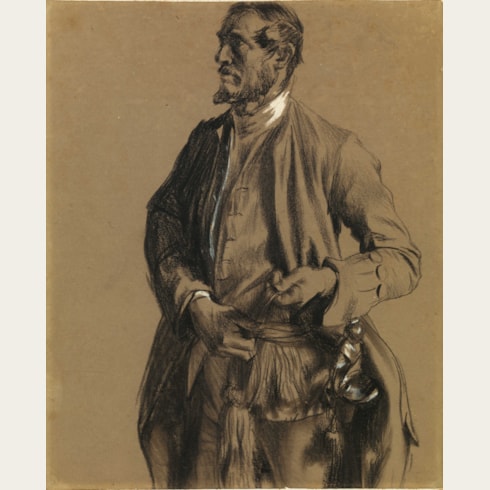Adolph MENZEL
(Breslau 1815 - Berlin 1905)
The Porta San Michele in Bressanone
Signed with initials A. M. at the lower right.
Inscribed Brixen on the verso.
Further inscribed (by Guido Kern) Original-Zeichnung / von A. von Menzel / Wert in April 1943 er. 1500 R.M – 2000 RM / Professor G. J. Kern on the verso.
180 x 113 mm. (7 1/8 x 4 1/2 in.)
This drawing depicts the Porta San Michele (St. Michaelstor), one of the main entrances to the historic centre of Brixen/Bressanone. First mentioned in the 12th century and originally the chief eastern entrance to the town, the gate takes its name from the Romanesque church of San Michele nearby. The façade of the gate is decorated with faded 16th century frescoes – only vaguely suggested in Menzel’s drawing - depicting Saint Sebastian, Saint Martin and the Beggar, Saint Christopher and Saint Anne with the Virgin and Child, as well as the coat of arms of the early 16th century Archbishop Christoph von Schrofenstein.
Menzel’s view of the Porta San Michele is likely to have been made from the 15th century bell tower of the adjoining church, known as the Torre Bianca (Weißer Turm), or White Tower. The present sheet, drawn on a page of one of the many sketchbooks the artist habitually carried with him on his travels, shows him studying the fall of sunlight on the rough stone walls of the gate, depicted with passages of delicate stumping, as well as the mural decoration of the walls and the mass of figures passing through the portal.
Menzel made at least two other drawings in Brixen/Bressanone during his brief visit in 1881; a view of the courtyard of the Köstlan mansion, now in the Kupferstichkabinett in Berlin, and a study of the side of a house in the centre of the town, now in the Städel Museum in Frankfurt.
Adolph Friedrich Erdmann von Menzel began his career working in his father’s lithography shop in Breslau (now Wroclaw in Poland) and later in Berlin, where his family moved in 1830. A brief period of study at the Akademie der Künste in Berlin in 1833 seems to have been the sum total of his formal training, and he is thought to have taught himself how to paint. At the outset of his career he worked as an illustrator, his activity in this field perhaps best exemplified by a series of some four hundred designs for wood engravings produced to accompany Franz Kugler’s History of Frederick the Great, published in instalments between 1840 and 1842. During the late 1840’s and 1850’s he was occupied mainly with a cycle of history paintings illustrating the life of Frederick the Great.
In 1861 Menzel received his most important official commission, a painting of The Coronation of King William I at Königsberg, on which he worked for four years. In the following decade, his lifelong interest in scenes of contemporary life culminated in what is arguably his masterpiece as a painter; the large canvas of The Iron Rolling Mill, painted between 1872 and 1875 and immediately purchased by the National-Galerie in Berlin. The last three decades of his career saw Menzel firmly established as one of the leading artists in Germany, a prominent figure in Prussian society and the recipient of numerous honours including, in 1898, elevation to the nobility. In the late 1880’s he began to abandon painting in oils in favour of gouaches, although old age meant that these in turn were given up around the turn of the century. Yet he never stopped drawing in pencil and chalk, able always to find expression for his keen powers of observation. A retrospective exhibition of Menzel’s work, held at the National-Galerie in Berlin a few weeks after the artist’s death in 1905, included more than 6,400 drawings and almost 300 watercolours, together with 129 paintings and 250 prints.
A passionate and supremely gifted draughtsman, Menzel was equally adept at watercolour, pastel, gouache and chalk. He was also able to draw with either hand, although he seems to have favoured his left. An immensely prolific artist (over four thousand drawings by him, together with 77 sketchbooks, are in the collection of the Nationalgalerie in Berlin alone), it is said that Menzel was never without a sketchbook or two in his pocket. His friend Paul Meyerheim described the artist’s appearance: ‘In his overcoat he had eight pockets, which were partially filled with sketchbooks, and he could not comprehend that there are artists who make the smallest outings without having a sketchbook in their pocket…an especially large pocket was installed…to hold a leather case, which held a pad, a coupe of shading stumps and a gum eraser.’ Menzel was widely admired as a draughtsman by his contemporaries, both in Germany and abroad, and Edgar Degas, for one, is known to have owned at least one drawing by him.
Provenance
Anonymous sale, Cologne, Van Ham Kunstauktionen, 15 November 2013, lot 621
Thomas Le Claire, Hamburg
W. M. Brady & Co., New York, in 2015
Private collection.

